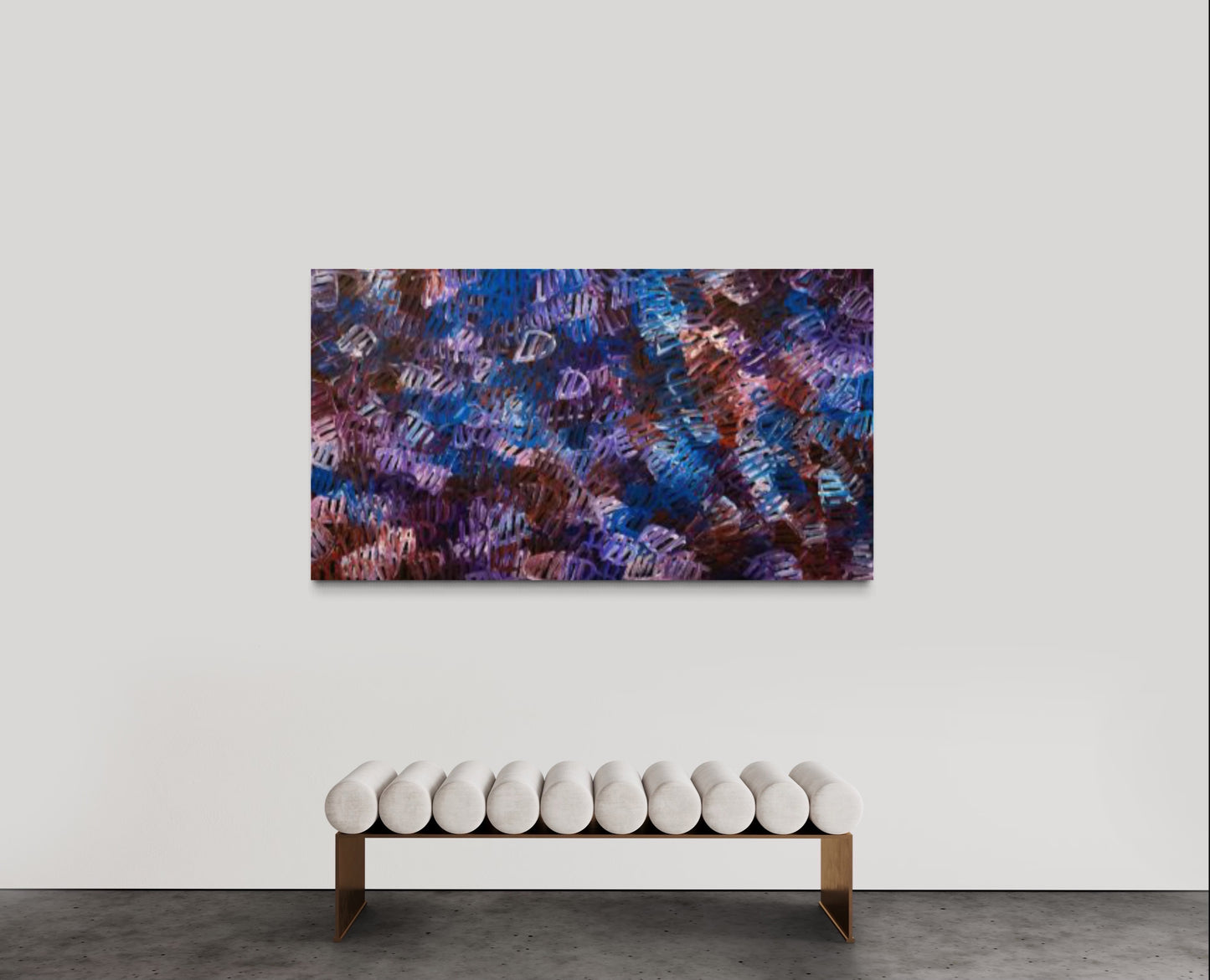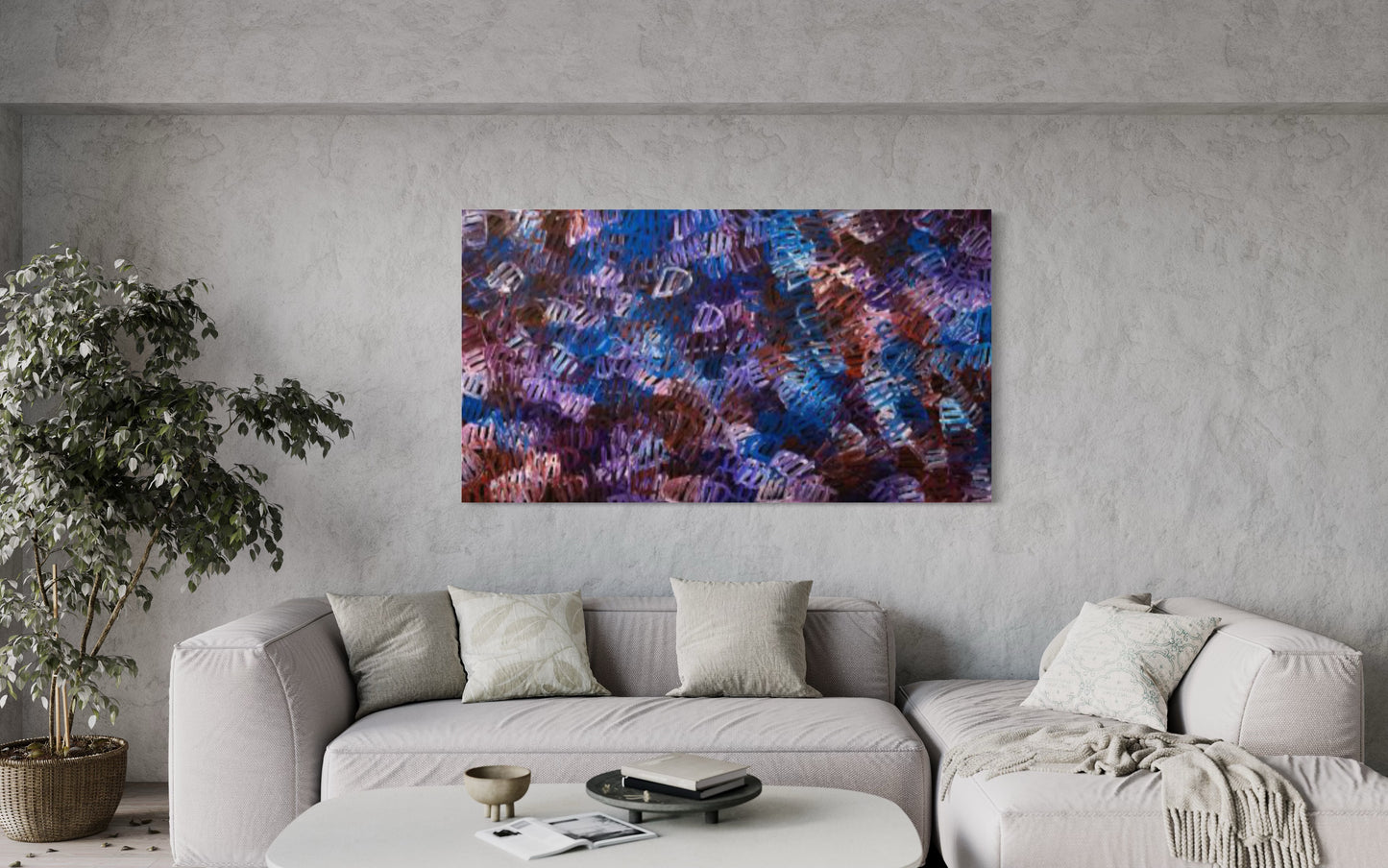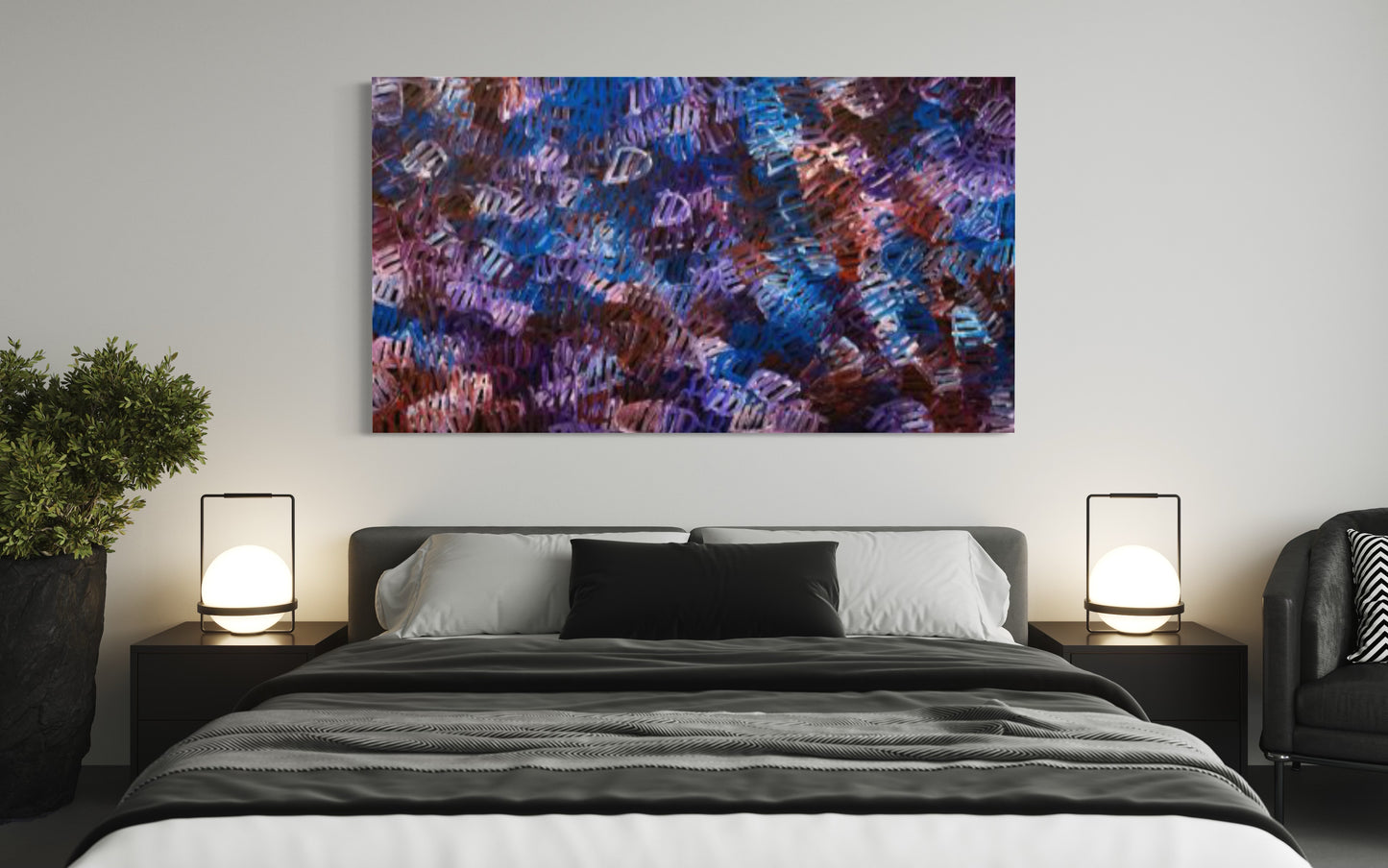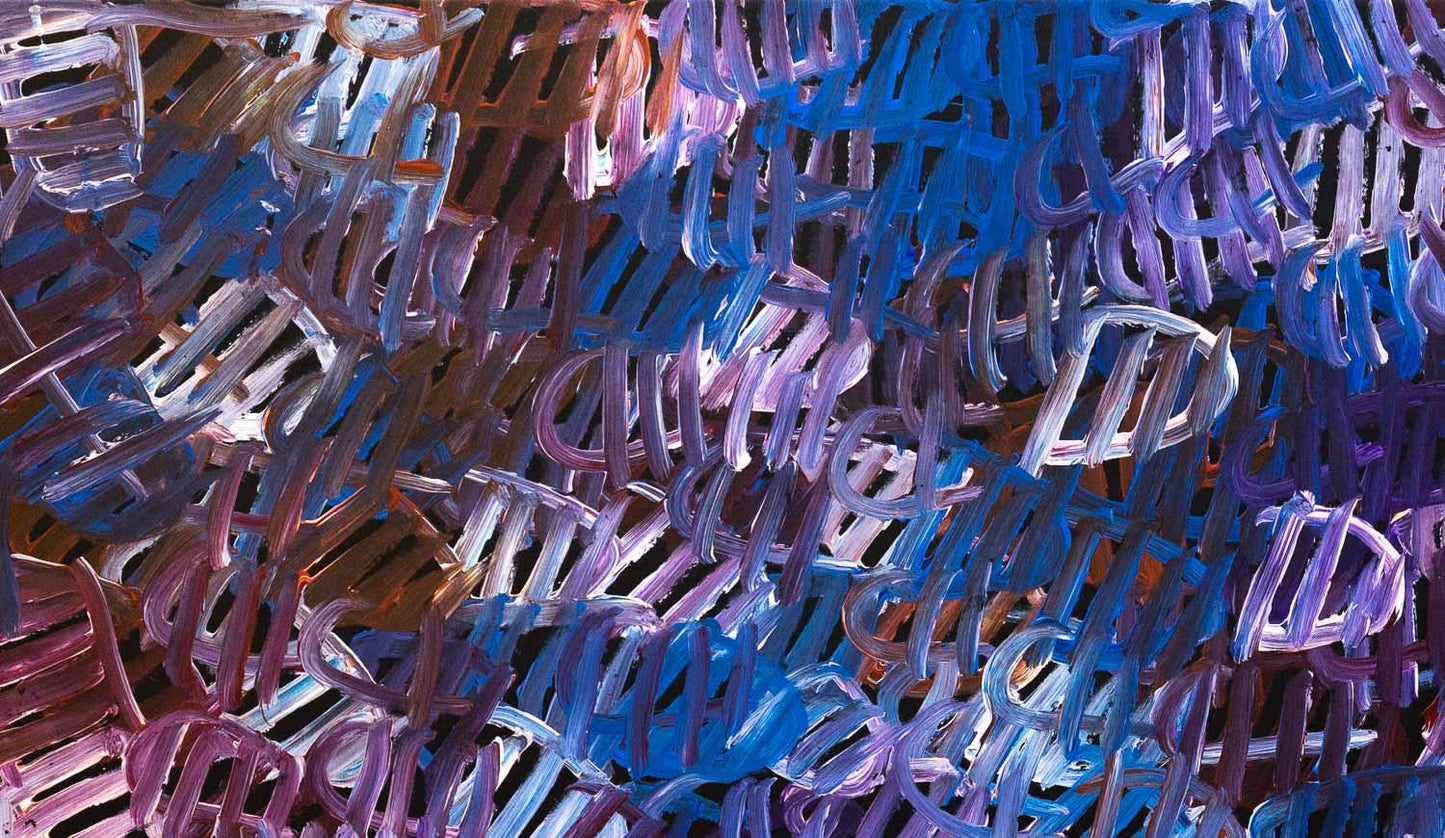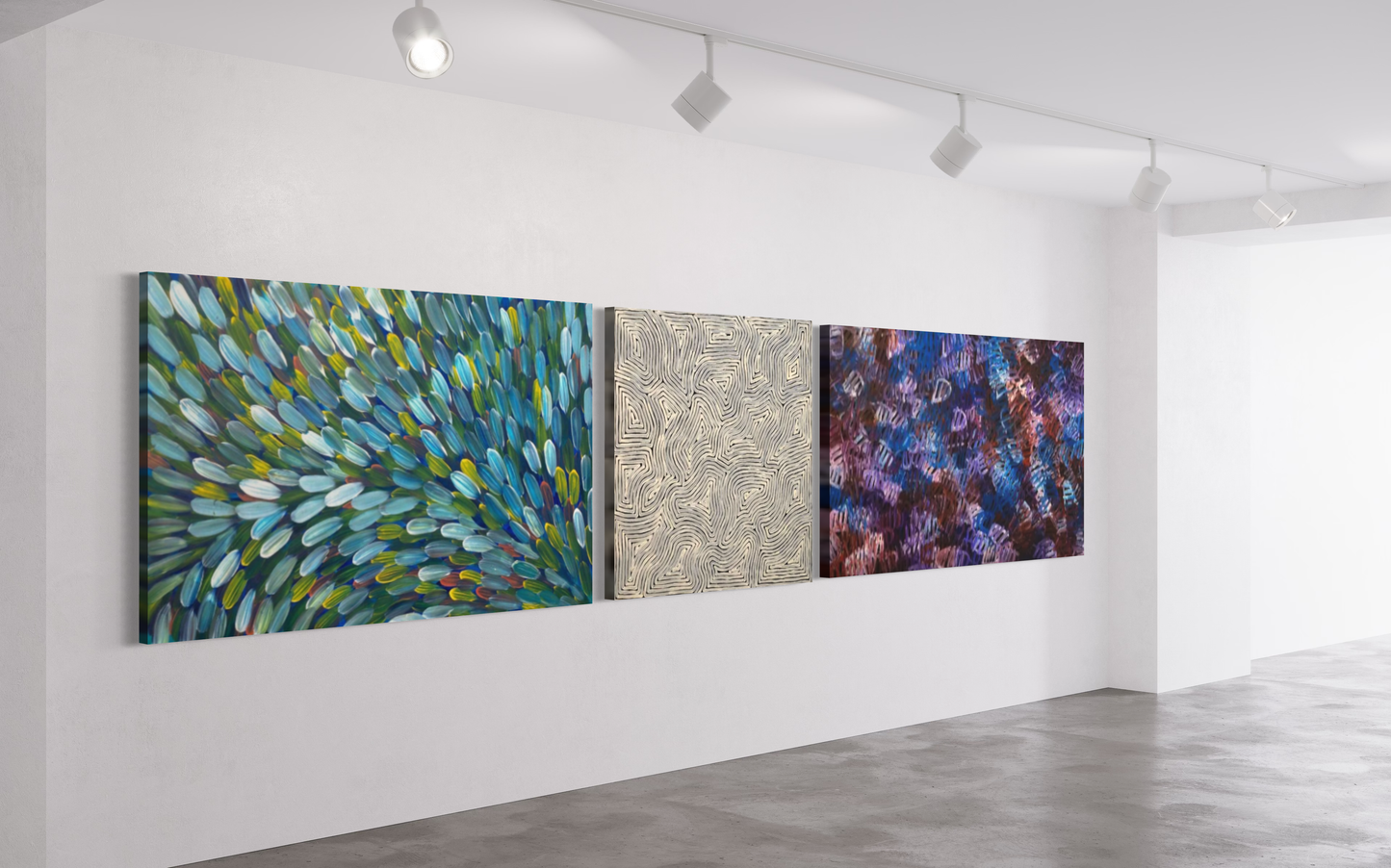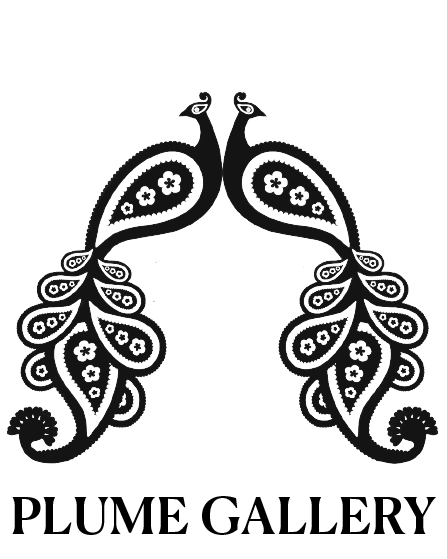1
/
of
6
Plume Gallery
EMILY PWERLE - 'Awelye Antwengerrp' 99x179cm
EMILY PWERLE - 'Awelye Antwengerrp' 99x179cm
Regular price
$7,500.00 AUD
Regular price
Sale price
$7,500.00 AUD
Taxes included.
Couldn't load pickup availability
Artist: Emily Pwerle
Size: 99x179cm
Art completed 2021
Original Indigenous art acrylic on linen
Certificate of Authenticity available.
Located offsite.
Viewing by appointment only.
EMILY PWERLE
Emily Pwerle is one of 8 children. She is the sister of the artist, Minnie Pwerle. She collaborated with the women of her family when Minnie’s daughter, the well-known artist Barbara Weir, organised her aunts and sisters Molly, Galya and Emily, as well as her mother Minnie to work together and individually to produce a series of paintings based on ceremonies and their Dreaming stories. Depicting the Awelye Atnwengerrp or Women’s Ceremony dancing tracks which can only be painted by the Pwerle or Kemarre owners. They are painted on the women’s bodies before ceremonies are performed.
Also, a dreaming painted by the women is the northern wild orange (Capparis Umbonata), known in Alyawarr as Akarley (pronounced a-kar-li). This fruit grows on a shrub about 3.5m high with weeping foliage and white flowers, and the fruits hang on long stalks, turning yellow or reddish at maturity. The women also paint a commonly occurring plant which has provided a staple food for Aboriginal people in Utopia for thousands of years. This plant is Portulaca oleracea, or munyeroo. The Alyawarr word for this plant is lyaw. Another important dreaming is the bush tomato, Anemangkerr. Represented by the circular shape which appears in many of Emily's paintings. The seed of the bush tomato is bitter and poisonous; however, the flesh is an important staple food throughout Utopia and other parts of Central Australia. Her complex linework and patterns depicting symbolic dreaming are usually overlapping and layered across the canvas. Often Emily will combine three dreaming’s, including the symbols for each one interacting amid the layered shapes.
Share

